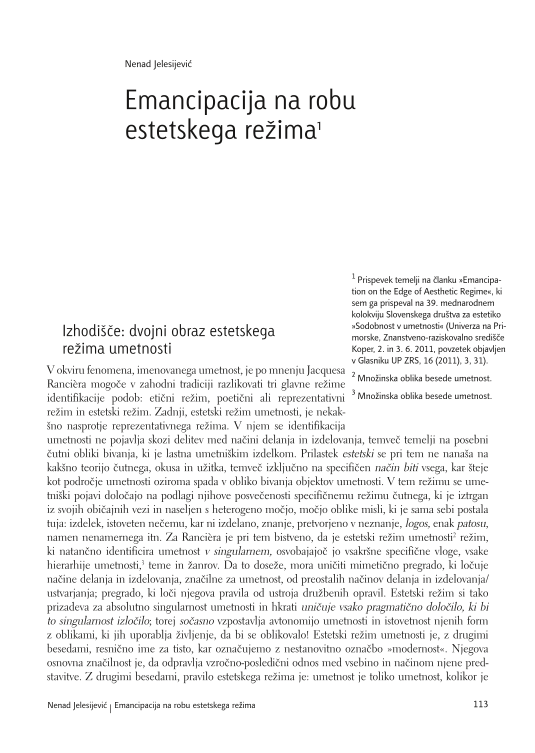The aesthetic regime of art, following J. Rancière, is not proclaiming revolution, but rather a new way of living between words, images and commodities. Starting the paper from the premise that that regime has a double face, I try to highlight the question of its (anti)revolutionary potential. Accordingly, I cannot avoid ascribing altered meanings to the term aesthetic, following the altered understanding of the very phenomenon/problem called art. In that regard, I comment on four examples of consensual and disensual artistic practices that aspire to be activist ones. The conclusion resulting from the comparative analysis is that the aesthetics of direct action is the aesthetics that escapes any outlined rule, being at the same time limited in time and space; it is valid in a certain moment, in a certain place, in a certain performative, rebellious context. The aesthetic of an emancipatory art practice—which is something else than art—is reconfigured aesthetic.




